Introduction
Ravi Jain, Investment Director, TDK Ventures
At TDK Ventures, our mission of backing breakthrough technologies that meaningfully reduce greenhouse gas (GHG) emissions has been underway since we began investing six years ago. Transportation and mobility remain among the largest contributors to GHG emissions, so we’ve been actively seeking partners that can help decarbonize this sector.
In India and “India-like” markets — think Southeast Asia, Africa, and Latin America, which together are home to over half the world’s population — two-wheeler (2W) mobility dominates. In India alone, 2Ws account for ~75% of all transportation. This is approximately 80% in Southeast Asia. We’ve long believed that partnering with iconic companies to decarbonize 2W mobility in these regions could make a significant dent in global emissions.

The State of 2W Electrification
The EV scooter movement in India was ignited not by incumbents but by bold startups. Ola Electric and Ather Energy led the charge, and today all major players — Bajaj, TVS, Hero — are pushing aggressively into electrification. EV scooters are approaching 20% penetration, with the shift driven by clear consumer value: better features (connectivity, infotainment), superior performance, and lower total cost of ownership than ICE scooters.
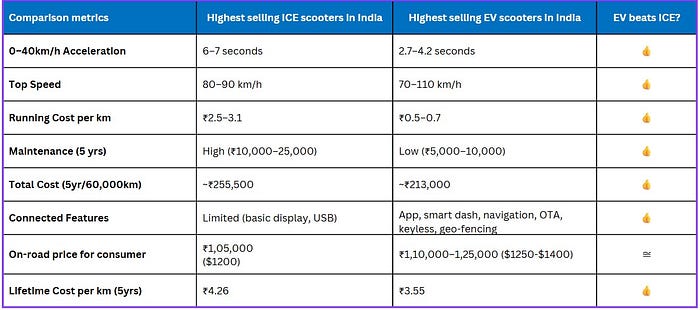
But scooters make up only part of the 2W picture. Motorcycles outnumber scooters nearly two-to-one. Without electrifying motorcycles, the 2W segment will fall far short of its decarbonization goals. Yet EV penetration in motorcycles is still under 1%.
Why the lag? EV motorcycle products with performance and prices comparable to their ICE equivalents do not exist. Beyond performance metrics, consumer perception plays a role. Scooters are often seen as multi-utility family vehicles, while motorcycles are more about individuality and self-expression — meaning design, styling, and aspirational appeal carry far greater weight.
The Engineering Challenge
Electrifying motorcycles is harder than it looks. Consumer expectations are higher across all performance vectors — torque, acceleration, range — yet the available form factor is smaller. Unlike scooters, which can house a battery under the floorboard, motorcycles require all energy and power components to fit within a tight weight and volume envelope.
This need for higher performance drives three core engineering requirements:
- Higher battery energy density
- Custom high-performance motors designed from scratch
- Thermal systems capable of safely handling higher currents
Global attempts at EV motorcycles have often stumbled. Our research showed two consistent failure points: underwhelming “scooter-like” performance, or pricing far beyond market tolerance.
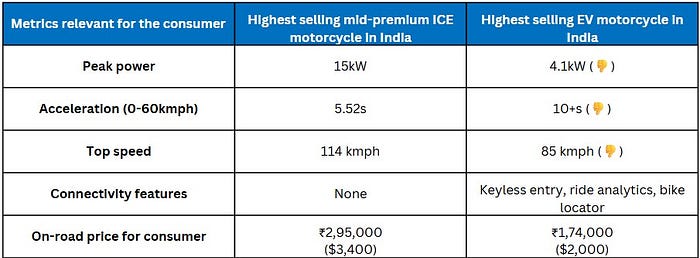
From these lessons, we defined what a winning company must have:
- Original IP and R&D to improve battery density and thermal management
- In-house design capability for all key powertrain components — motor, MCU, BMS
- Vertical integration to balance performance, features, and affordability
- Aspirational design that resonates with riders’ sense of identity
- A flexible platform that can support multiple product lines, maximizing R&D efficiency
Why Ultraviolette Stands Out?
We engaged with nearly every company building, or planning to build, EV motorcycles in these markets. We rode almost every available model as well as prototypes of upcoming releases. One company stood apart: Ultraviolette.
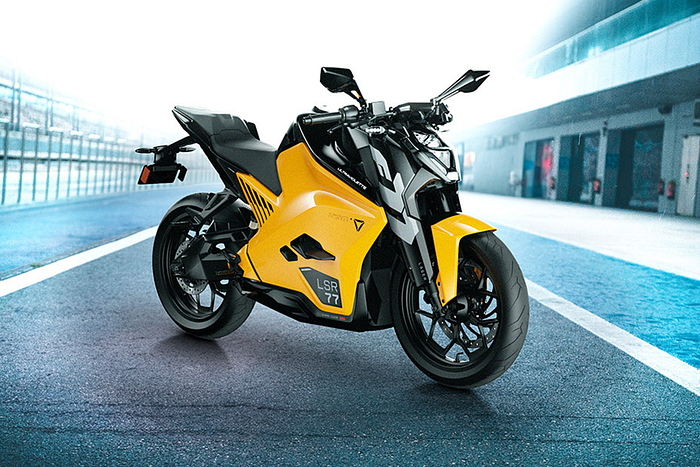

From our first ride on the F77 — and other models still under wraps — it was clear the team was hitting every benchmark we cared about: performance exceeding ICE peers, design that would excite India’s youth and global riders alike, and a price point accessible to a broad audience.
Key differentiators we found:
- A ground-up battery pack design with one of the best energy densities we’ve seen across applications
- A software-defined vehicle architecture with in-house designed BMS, MCU, and control systems
- Award-winning designs from the outset
- A manufacturing facility already producing multiple SKUs, with strong automation and quality control
Ultraviolette’s engineering DNA is heavily inspired by aviation, influencing both problem-solving approaches and team structure. Much like an F1 outfit, team Ultraviolette is constantly iterating on next-gen platforms.
Ultraviolette’s F99 platform pushes EV motorcycle performance beyond the current global state of the art — and it’s already set the record as the fastest motorcycle ever built in India.
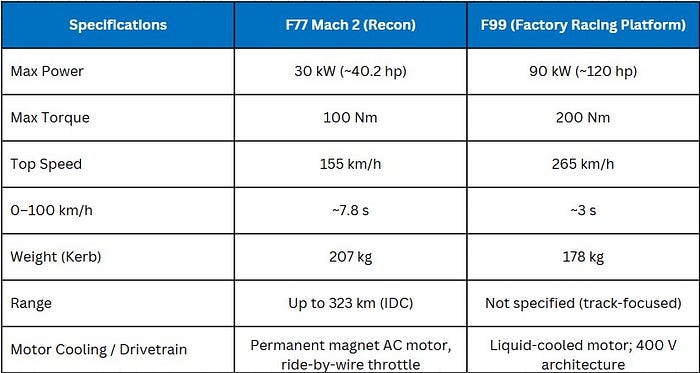
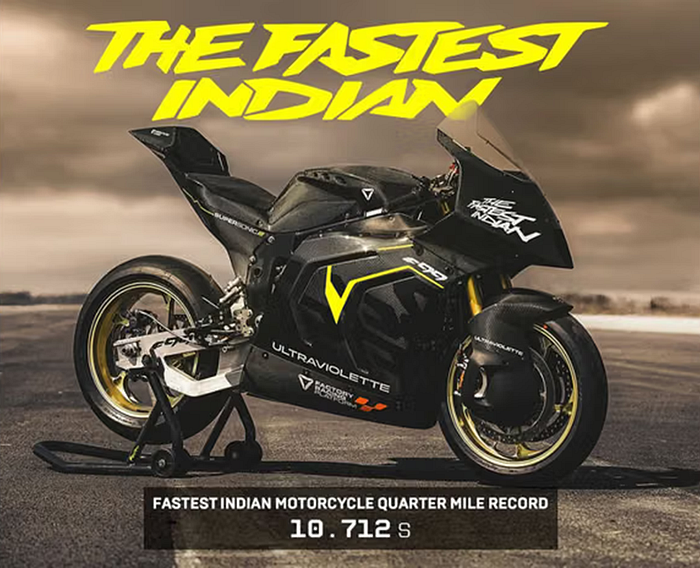
Beyond the Numbers
Some things can’t be captured in specs or spreadsheets. Ultraviolette’s founders and team radiate passion and purpose — creating the best products from India, for India and the world. The company’s rider community reflects this spirit; every owner we met had their own “Ultraviolette story,” and the loyalty they displayed is rare to build in such a short time.

Performance with Safety
We also admire Ultraviolette’s focus on safety. Given the high rate of 2W fatalities, their efforts to address root causes through technology could have profound consumer impact. Ultraviolette’s R&D is investing in creating not only the most performant but the safest EV motorcycling platform. Its existing models already have superior traction control and stability control.

Ultraviolette is also doing pioneering work by introducing a sensor stack including cameras, radar and haptic sensors, while developing AI algorithms to provide safety warnings to the rider, and we expect that the company will be the first to bring such features to the market. These will help avoid collisions and accidents caused by blind spots for riders.

An Aspirational EV Platform for the World
Ultraviolette’s platform strategy is both efficient and versatile. The same architecture supports multiple products, enabling rapid development and cost efficiencies.
In just the past year, Ultraviolette has launched: Shockwave — an off-road/adventure motorcycle; Tesseract — their first scooter and X47 — their crossover motorcycle with radar and camera sensors-based safety features named ‘Hypersense’ with best-in-class functionality. The platform approach can spawn several more new products over the next few years, making high-quality EVs accessible to a wide consumer base.
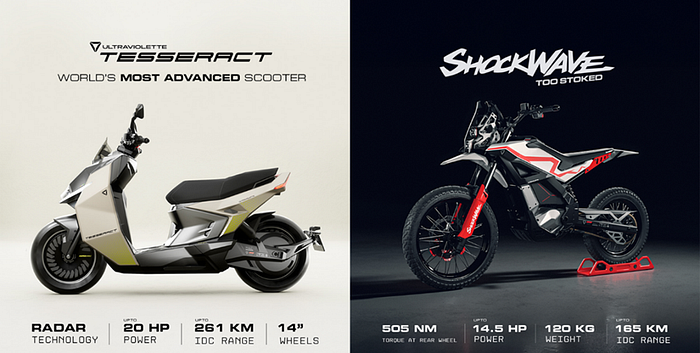
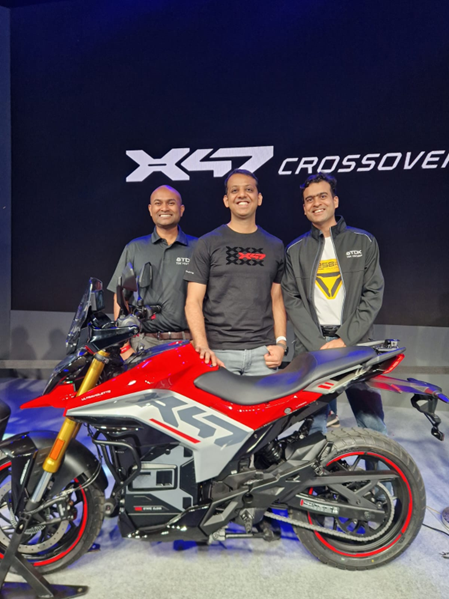
The company is also building for international markets, earning rave reviews (RideApart, Sept 2025, The Pack, Sept 2025) in Europe, where deliveries began earlier this year.
We believe this is only the beginning of Ultraviolette’s journey — and we’re proud to be part of it.



